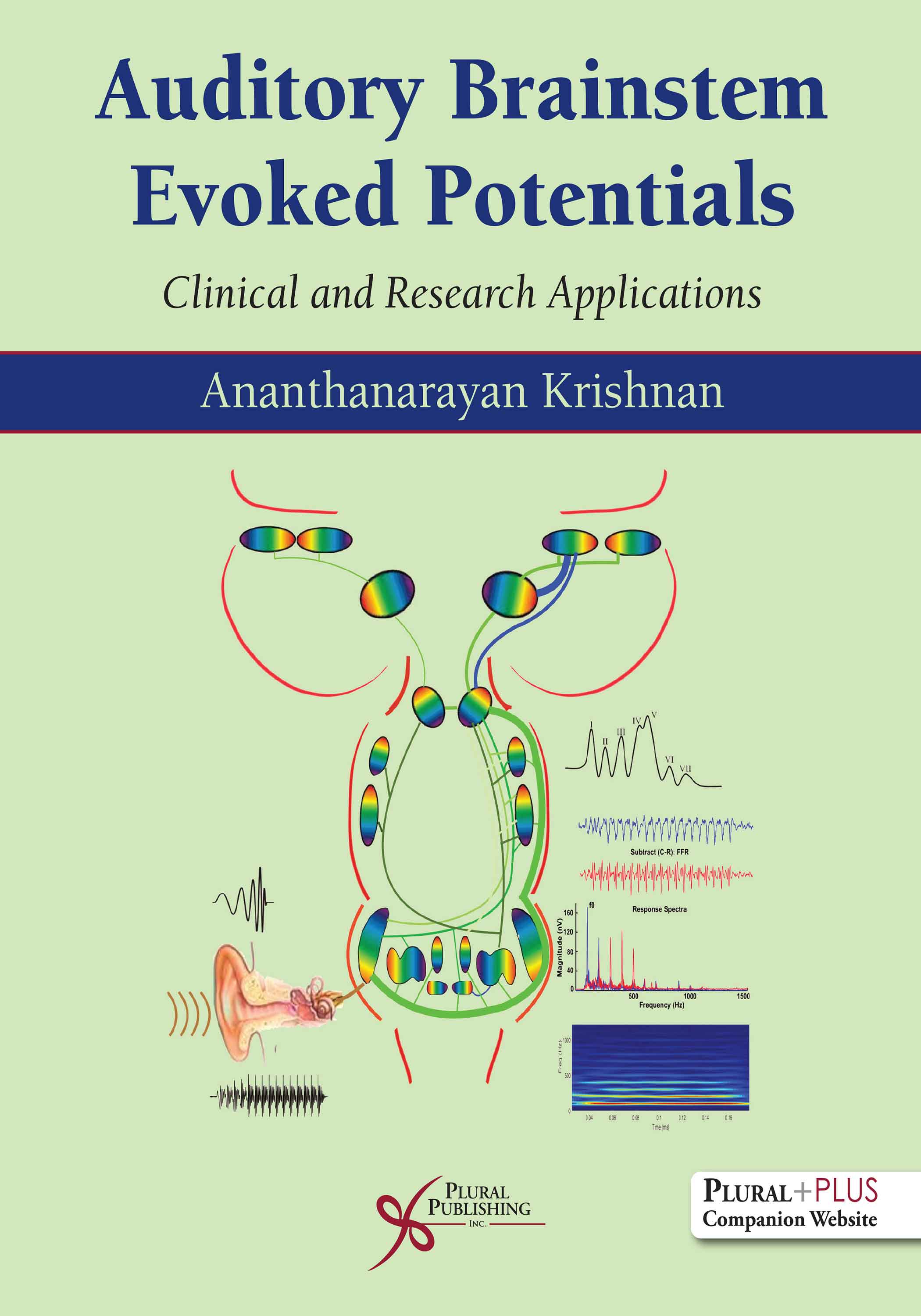
Auditory Brainstem Evoked Potentials: Clinical and Research Applications
First Edition
Ananthanarayan (Ravi) Krishnan
Details: 379 pages, B&W, Softcover, 8.5" x 11"
ISBN13: 978-1-63550-239-8
© 2023 | Available
For Instructors
Purchase
Auditory Brainstem Evoked Potentials: Clinical and Research Applications provides a solid foundation of the theoretical principles of auditory evoked potentials. This understanding is important for both the development of optimal clinical test strategies, and interpretation of test results. Developed for graduate-level audiology students, this comprehensive text aims to build a fundamental understanding of auditory evoked brainstem responses (ABR), and their relationship to normal and impaired auditory function, as well as its various audiologic and neurootologic applications.
In addition to covering the classical onset ABR, the book provides a thorough review of sustained brainstem responses elicited by complex sounds, including auditory steady state response (ASSR), envelope following response (EFR), and frequency following response (FFR), and the growing clinical and research applications of these responses. By exploring why certain stimulus manipulations are required to answer specific clinical questions, the author provides the resources needed for students and clinicians to make reasoned decisions about the optimal protocol to use in a given situation.
Key Features
- A full chapter devoted to laboratory exercises
- Numerous illustrations to help explain key concepts
- Description of neural bases underlying amplitude and latency changes
- Troubleshooting techniques
- End-of-chapter summaries
- A PluralPlus companion website with PowerPoint slides for instructors and case studies for students
PluralPlus Online Ancillaries
For instructors: PowerPoint Slides
For students: Case Studies
Reviews
"This textbook is well written, clear, and easy for a student to understand. It provides a good theoretical basis for electrophysiological applications and a good description of the physiological bases of various modulating ABR parameters. The textbook’s coverage of new areas in the field is balanced. The author includes substantial information regarding current clinical applications.The text is quite up-to-date and provides important new information. Examples: 1) the potential use of the ABR to evaluate synaptopathy, 2) the eCAP for evaluating neural health in individuals who use cochlear implants, and 3) the complex ABR for evaluating efficacy of hearing aid fittings."
—Samira Anderson, AuD, PhD, Associate Professor, Department of Hearing and Speech Sciences, University of Maryland
“Auditory Brainstem Evoked Potentials: Clinical and Research Applications is a tour deforce on human auditory electrophysiology as it relates to hearing and neuro-diagnostics. There has not been a dedicated, updated text on the ABR in 20+ years. The authors fill that void, taking great care to weave basic hearing science with clinical interpretation. We learn not only the clinical manifestations that are observable in auditory brain activity but why, through detailed description of the underlying neurophysiology. The book is well organized, progressing from basic anatomy and neurophysiology, to basic “meat and potato” stimulus and recording factors affecting ABR, to E-phys assessment in hearing pathologies. The final two chapters provide a basic overview of the emerging FFR and its clinical/research applications. To date there has not been a good text on the FFR nor a primer of how to record it. That is a welcome contribution and perhaps a unique offering of this book. ...Coverage of IOM is also a plus. Monitoring is often not included in other AEP texts and again is something that stands out in this text."
—Gavin Bidelman, PhD, Professor, School of Communication Sciences & Disorders, University of Memphis
"This book is an excellent and comprehensive overview of early auditory evoked potentials; highlighting their clinical utilizations and research relevance. It is written appropriately for the intended professional audience (e.g., audiology graduate students and practitioners) with numerous and relevant resources/references for more advanced graduate application and further scientific exploration (e.g., hearing science PhD students, academics)."
—Jason Tait Sanchez, PhD, CCC-A, FAAA, Associate Professor and Director of Graduate Studies, Department of Communication Sciences and Disorders, Department of Neurobiology, Northwestern University
"The content is very advanced, but the book was very thorough. I think it was easy to follow considering the level of content. The material was well integrated from chapter to chapter. It clearly covers A&P, some historical notes, and some current research. The concepts were laid out appropriately and in logical order."
—Brenda Fields Cross, AuD, Department Chair and Clinical Assistant Professor, Department of Communicatin Disorders, West Texas A&M University
"This is the book that I have been waiting for to use for my Auditory Evoked Potentials course. It fills the void of a current, up to date text. It includes the right amount of detail for AuD students to thoroughly understand ABR’s and related measures to a degree that can support good clinical decision making."
—Hannah Ditmars, AuD, CCC-A, Assistant Professor of Practice, Department of Special Education and Communication Disorders, Univeristy of Nebraska- Lincoln
“This book covers the structure, function, and clinical aspects of auditory brainstem evoked potentials for the audiologist and researcher.
The author's stated goal is to foster an understanding between evoked potentials, neuroanatomy, and their structure-function relationship to guide audiologists in procedures for assessing impairment. The book contains sufficient content on envelope following response and frequency following response to make it useful in more than one course in a doctoral program.
The book's primary target audience is graduate audiology students. The author has taught electrophysiology for 30 years and is well-equipped to write a book for this level and breadth of study.
The book begins with an overview of neuroanatomy of the auditory system through the brainstem and neural structures and function before diving into clinical applications of ABR and eCochG in intraoperative monitoring. It finishes with information on envelope following response and frequency following response. A unique element of this book is the 14 labs included in the last chapter to support learning.
This quality resource is an asset to the field of audiology. It is well written, is easy to follow with logical organization, and covers the topics very well. The review of neurons and neural anatomy is helpful and gives the right amount of detail and explanation for the audience… Two helpful aspects are the book's end-of-chapter summaries and lists of excellent reviews with more detail if readers would like to dive deeper but do not want to look at every title included in the references.”
–Lori J. Newport, AuD, Biola University, from Doody’s Reviews (April 2022)
“This book is aimed at and will be most useful for students first learning about ABR or researchers/clinicians looking for in-depth explanations on the anatomical sites of generation for the differing auditory brainstem evoked potentials… It would be a very useful book for clinicians first working out how to record different auditory responses due to its superb grasp of the brainstem anatomy and recording parameters of all the different tests.
…it is one to keep on the shelf within specialist evoked potential or clinical neurophysiology departments where occasionally weird and wonderful requests come for recording things out of the ordinary, and would be more useful for students and researchers.”
–Jason Smalley, Specialist Audiologist, Nottingham University Hospitals NHS Trust, UK, in ENT & Audiology News (May/June 2022)
Preface
Reviewers
Chapter 1. Overview of the Neuroanatomy of Auditory Periphery and Brainstem
Scope
I. Auditory Periphery: Cochlear and Auditory Nerve Neuroanatomy
Cochlea: Structure and Functional Implications
Afferent Innervation of the Cochlea
Formation of the Auditory Nerve
II. Neuroanatomy of the Auditory Brainstem
Salient Features of Organization of Brainstem Structures and Pathways
Cochlear Nucleus (CN)
Superior Olivary Complex (SOC)
Nuclei of Lateral Lemniscus (NLL)
Inferior Colliculus (IC)
III. Efferent Pathways
Efferent Innervation of the Cochlea
Efferent Innervation of the IC
IV. Summary
V. Recommended Readings:
Excellent Reviews With Sufficient Detail
References
Chapter 2. Neural Activity Underlying Scalp-Recorded Evoked Potentials
Scope
I. Neuronal Physiology
Structure of a Neuron
Requirements for Neural Signaling
Generation and Maintenance of the Resting Membrane Potential (RMP)-Polarized Cell
Action Potential: Generation, Propagation, and Synaptic Transmission
II. Neural Bases of Evoked Potentials
III. Auditory Evoked Potentials (AEP): Classification and Types
IV. Summary
V. Recommended Readings
Excellent Review of Dipoles and Overview of Neuronal Physiology
References
Chapter 3. Stimuli and Data Acquisition Principles
Scope
I. Stimulus Section
Stimulus Type
Transducer Type
Calibration of Stimulus Intensity
How Do These SPL Measures Translate to the dB nHL Scale?
II. Analog Signal Conditioning and Preprocessing Section
III. Digital Signal Processing Section
IV. Summary
V. Recommended Readings
Excellent Chapters With More Details
References
Chapter 4. Normative Aspects of the Auditory Evoked Responses from the Brainstem
Scope
I. Auditory Brainstem Responses (ABRs)
ABR Components and Response Morphology
Neural Generators of the ABR Components
Latency Correspondence Between Intracranial and Scalp-Recorded ABR Components
Identification of ABR Generators in Individuals with Confirmed Focal Brainstem Lesions
ABR Indices
What Are the Physiological Determinants of ABR Response Latency and Amplitude?
Response Amplitude
Effects of Stimulus Factors
Effects of Recording Factors
Effects of Subject Factors
II. Summary
References
Chapter 4. Normative Aspects of the Auditory Evoked Responses from the Brainstem
Scope
I. Auditory Brainstem Responses (ABR)
ABR Components and Response Morphology
Neural Generators of the ABR Components
Latency Correspondence Between Intracranial and Scalp Recorded ABR Components
Identification of ABR Generators in Individuals with Confirmed Focal Brainstem Lesions
ABR Response Indices
What Are the Physiological Determinants of ABR Response Latency and Amplitude?
Response Amplitude
Effects of Stimulus Factors
Effects of Recording Factors
Effects of Subject Factors
II. Summary
References
Chapter 5. Clinical Applications of the Auditory Brainstem Responses: Audiologic Applications for Hearing Screening, and Threshold Estimation
Scope
I. Hearing Screening
Hearing Screening: Factors Determining Optimal Implementation
Hearing Screening Protocols
II. Frequency-Specific Threshold Estimation Using Auditory Brainstem Responses
Frequency and Place Specificity
Derived Narrowband Responses Using High-Pass Masking Noise on Click-Evoked ABRs
Notched Noise Masking to Ensure Place Specificity of the ABR
Estimation of the Air-Conduction Threshold Using ABRs Elicited by Frequency-Specific Tone Bursts
Estimation of the Bone-Conduction Threshold Using ABRs Elicited by Frequency-Specific Tone Bursts
AC-ABR and BC-ABR Protocols for Threshold Estimation
Preliminary Considerations
ABR-AC and ABR-BC Threshold Estimation Procedure
Click ABR Protocol to Identify Auditory Neuropathy
Emergence of Narrowband Chirp Stimuli to Estimate AC-ABR and BC-ABR Thresholds
III. Frequency-Specific Threshold Estimation Using the Brainstem Auditory Steady-State Response (ASSR)
IV. Summary
References
Chapter 6. Clinical Applications of the Auditory Brainstem Response: Differential Diagnosis
Scope
I. ABR in Conductive Hearing Loss (CHL)
Effects on ABR Characteristics
Effects of Chronic Middle Ear Infection on the Brainstem Response
CHL Causes Structural and Functional Changes in the Auditory Brainstem
II. ABR in Cochlear Hearing Loss
Effects on ABR Characteristics
Relationship Between Magnitude of Latency Shift and Degree and Configuration of Cochlear Hearing Loss
Relationship Between Slope of Wave V Latency-Intensity Function and Degree and Configuration of Cochlear Hearing Loss
Effects of Cochlear Hearing Loss on ABR Interpeak Latencies
III. ABR in Auditory Nerve and Brainstem Lesions
Effects on ABR Response Characteristics
Effects of Auditory Nerve and Lower (Caudal) Brainstem Lesions on the ABR
Abnormal Interpeak Latencies (IPL: I-III, I-V, and III-V)
Abnormal Interaural Latency Difference in Wave V (ILDv)
ABR Sensitivity Is Reduced in the Detection of Small Auditory Nerve Tumors
Stacked ABR as a Method to Improve Detection of Small Acoustic Tumors
Relationship Between ABR and Auditory Nerve Tumor Size
Bilateral Effects of Auditory Nerve and Lower Brainstem Lesions
Use of V/I Amplitude Ratio in the Detection of Auditory Nerve and Lower Brainstem Lesions
IV. ABR in Auditory Neuropathy (AN) and Cochlear Synaptopathy
Introduction
ABRs in Auditory Neuropathy
ABRs in Cochlear Synaptopathy
V. ABR in Upper (Rostral) Brainstem Lesions
ABR Characteristics
VI. ABR Test Strategy for Neurodiagnostic Evaluation of Site(s) of Lesion
Choice of Stimulus Parameters
Choice of Recording Parameters
VII. Summary
References
Chapter 7. Neurotologic Applications: Electrocochleography (ECochG) and Intraoperative Monitoring (IOM)
Scope
I. Electrocochleography (ECochG)
Cochlear Microphonic (CM)
Clinical Applications of the CM
Summating Potential (SP)
Clinical Applications of SP
Whole Nerve Compound Action Potential (CAP)
II. ABR Diagnostic Measure for Cochlear Hydrops: Cochlear Hydrops Analysis Masking Procedure (CHAMP)
III. The Electrical Compound Action Potential (eCAP) and Its Application in Cochlear Implants: Intracochlear ECochG
Response Characteristics
Clinical Applications
IV. Electrical ABR (eABR) and Its Application in Cochlear Implant Evaluation
Response Characteristics of the Normal eABR
Methods to Record and Analyze the eABR
V. Application of Auditory Nerve and Brainstem Responses in Intraoperative Monitoring
Introduction and Rationale
Surgical Approaches
Commonly Used Measures for IOM
IOM Procedures and Interpretation of Changes in Response During Surgery
Stimulus
Response Recording
Response Interpretation and Reporting
Hearing Preservation (HP) in IOM
VI. Summary
References
Chapter 8. Brainstem Evoked Responses to Complex Sounds: Characteristics and Clinical Applications
Scope
I. Envelope Following Response (EFR)
II. Response Characteristics of EFRs Elicited by SAM Tones
Effects of Intensity
Effects of Carrier Frequency
Effects of Modulation Rate
Effects of Age
III. Use of EFR in Auditory Threshold Estimation
Air-Conduction Threshold Estimation in Adults and Infants with Normal Hearing (AC-EFR)
Threshold Estimation in Adults and Infants with Sensorineural Hearing Loss
Bone-Conduction Threshold Estimation in Normal and Hearing-Impaired Individuals (BC-EFR)
IV. EFRs Elicited by Speech Sounds
Characteristics of Speech Stimuli
Response Characteristics of the EFR to the CV Syllable /da/
Effects of Stimulus Polarity on Speech-Evoked EFR
Test-Retest Reliability of the EFRs
Stimulus Specificity of the EFR
Potential Clinical Applications of EFRs
Effects of Cochlear Impairment on Envelope Encoding
Utility of EFR in Hearing Aid Outcome Measure
V. Frequency Following Response (FFR)
General Description
Response Characteristics
Effects of Stimulus Level
Effects of Stimulus Frequency
VI. Frequency Following Responses to Complex Sounds
Frequency Following Responses Representing Cochlear Nonlinearity
FFRs Elicited by Time-Variant Speech-Like and Speech Sounds
VII. Cochlear Regions Contributing to the FFR
VIII. How Is the Population Response Reflected in the FFR Related to Single-Neuron Activity?
IX. Neural Generators of the EFR/FFR
Early Research Supporting Brainstem Origin of the FFR
Current Views on the Neural Generators of the FFR
X. Clinical Applications of the FFR
XI. Recording and Analysis of EFR and FFR
Electrode Montage
Time-Domain Measures
Response Latency
Autocorrelation
Autocorrelogram (ACG)
Pitch Tracking Accuracy Using Autocorrelation
Phase Coherence
Frequency-Domain Measures
XII. Summary
References
Chapter 9. Research Applications of the Frequency Following Response
Scope
I. Pitch: an Important Perceptual Attribute
Hierarchical Nature of Pitch Processing
II. Neural Representation of Pitch-Relevant Information of Complex Sounds
Neural Correlates of Pitch of Harmonic, Inharmonic, and Frequency-Shifted Sounds
Neural Correlates of Resolved Versus Unresolved Complex Sounds
Relative Roles of Envelope and Temporal Fine Structure in Pitch
Neural Correlates of Pitch Salience
Neural Representation of Speech in Adverse Listening Conditions
Effects of Reverberation
Effects of Background Noise
III. Neural Representation of Linguistic Pitch-Relevant Information in the Brainstem
Perceptual Attributes of Pitch in Tonal Languages
Language Experience-Dependent Plasticity in Pitch Processing in the Brainstem
Language Experience-Dependent Effects in the Brainstem Are Feature Specific
Domain Specificity of the Experience-Dependent Effects in the Brainstem
Experience-Dependent Effects Are More Resilient to Signal Degradation
Structural Versus Functional Asymmetries in Neural Representation
Hierarchical Processing as a Basis of Experience-Dependent Pitch Processing
IV. FFR Correlates of Binaural Processing
FFR Correlates of Binaural Interaction
FFR Correlates of Binaural Masking Level Difference (BMLD)
FFR Correlates of Spatial Release From Masking
Neural Representation of Vocoded Speech Sounds
EFR/FFR Applications in Different Populations–Potential for Development of Clinical Measures
V. Summary
References
Chapter 10. Auditory Brainstem Responses Laboratory Exercises
Scope
Preliminary Considerations for Recording Auditory Brainstem Responses
I. Effects of Stimulus Factors on the ABR Components
Lab 1. Effects Stimulus Intensity of Click-Evoked ABR
Lab 2. Effects of Stimulus Intensity on the Broadband Chirp-Evoked ABR
Lab 3. Effects of Stimulus Frequency on Tone Burst-Evoked ABR
Lab 4. Effects of Stimulus Repetition Rate on the ABR
Lab 5. Effects of Stimulus Rise-Fall Time
Lab 6. Effects of Stimulus Onset Polarity on the ABR
II. Effects of Recording Parameters on the ABR
Lab 7. Effects of Number Sweeps on Averaging the ABR
Lab 8. Effects of Recording Electrode Montage
Lab 9. Effects of High-Pass and Low-Pass Analog Filter Settings on the ABR
III. Threshold Estimation Using the ABR
Lab 10. Estimation of Air-Conduction Threshold Using Simulated Conductive Hearing Loss
IV. Threshold Assessment in Babies (Birth to Six Months)
Example of an ABR Protocol for Threshold Estimation in Babies
Lab 11. Identification and AC-ABR Threshold Estimation From ABR Waveforms Recorded from Infants
V. Interpretation of ABRs to Determine the Site of Lesion
Lab 12. Unmarked ABR Waveform Data (audiograms in some cases)
VI. Recording of Auditory Stead-State Response, Envelope Following Response, and Frequency Following Response
Lab 13. Recording and Analysis of ASSR
Lab 14. Recording and Analysis of EFRs and FFRs
VII. Protocol Consideration for Electrocochleography (EcochG)
VIII. Summary
IX. Recommended Reading
Index
Auditory Brainstem Evoked Potentials: Clinical and Research Applications comes with access to supplementary student and instructor materials on a PluralPlus companion website.
STUDENTS:
To access the student materials, you must register on the companion website and log in using the access code printed on the inside front cover of your book.
INSTRUCTORS:
To access the instructor materials, you must contact Plural Publishing, Inc. to be verified as an instructor and receive your access code.
Email: instructormaterials@pluralpublishing.com
Tel: 866-758-7251 (toll free) or 858-492-1555
*Note for students: If you have purchased this textbook used or have rented it, your access code will not work if it was already redeemed by the original buyer of the book. Plural Publishing does not offer replacement access codes for used or rented textbooks.
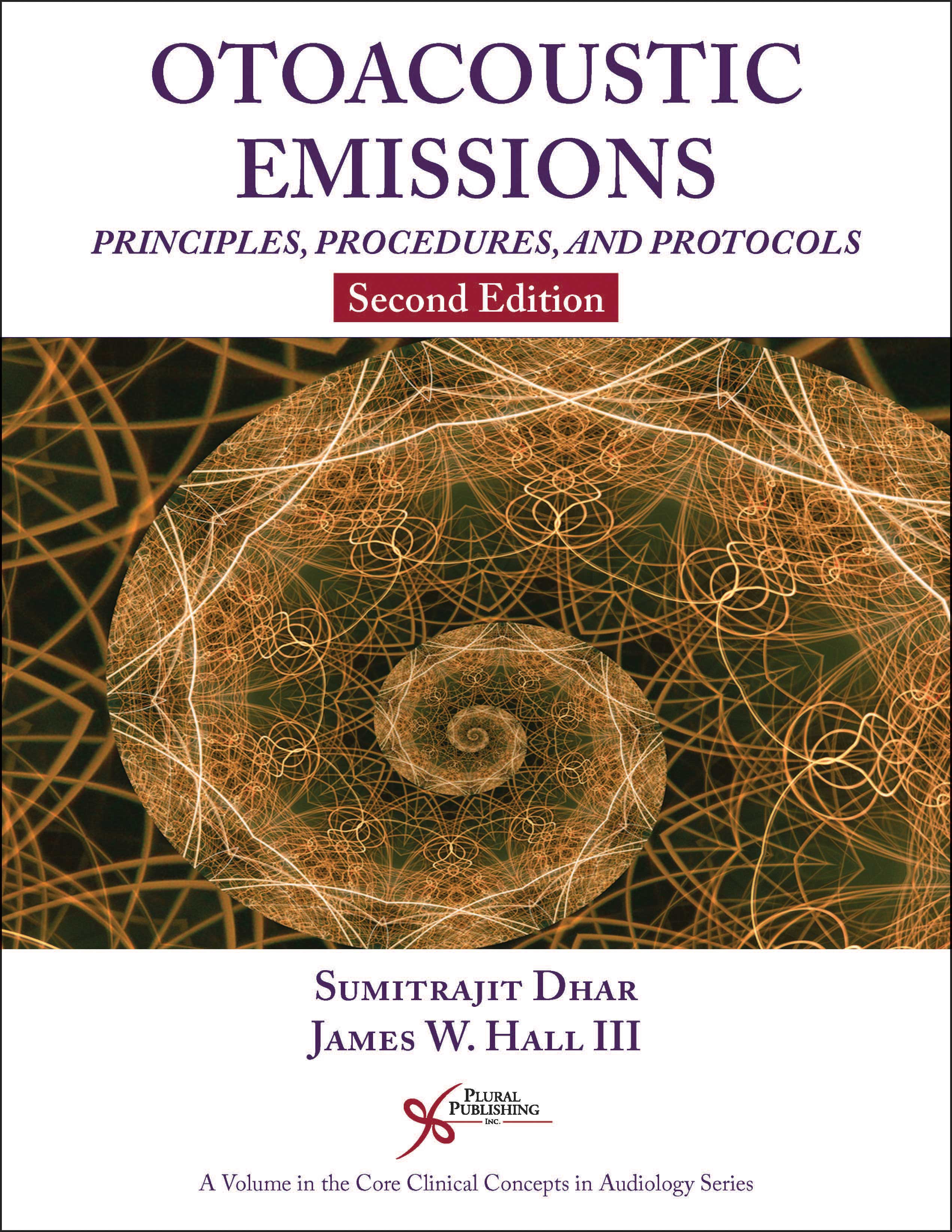
Otoacoustic Emissions: Principles, Procedures, and Protocols
Second Edition
Sumitrajit Dhar, James W. Hall, III
Details: 293 pages, 2-Color, Softcover, 8.5" x 11"
ISBN13: 978-1-94488-385-0
© 2018 | Available
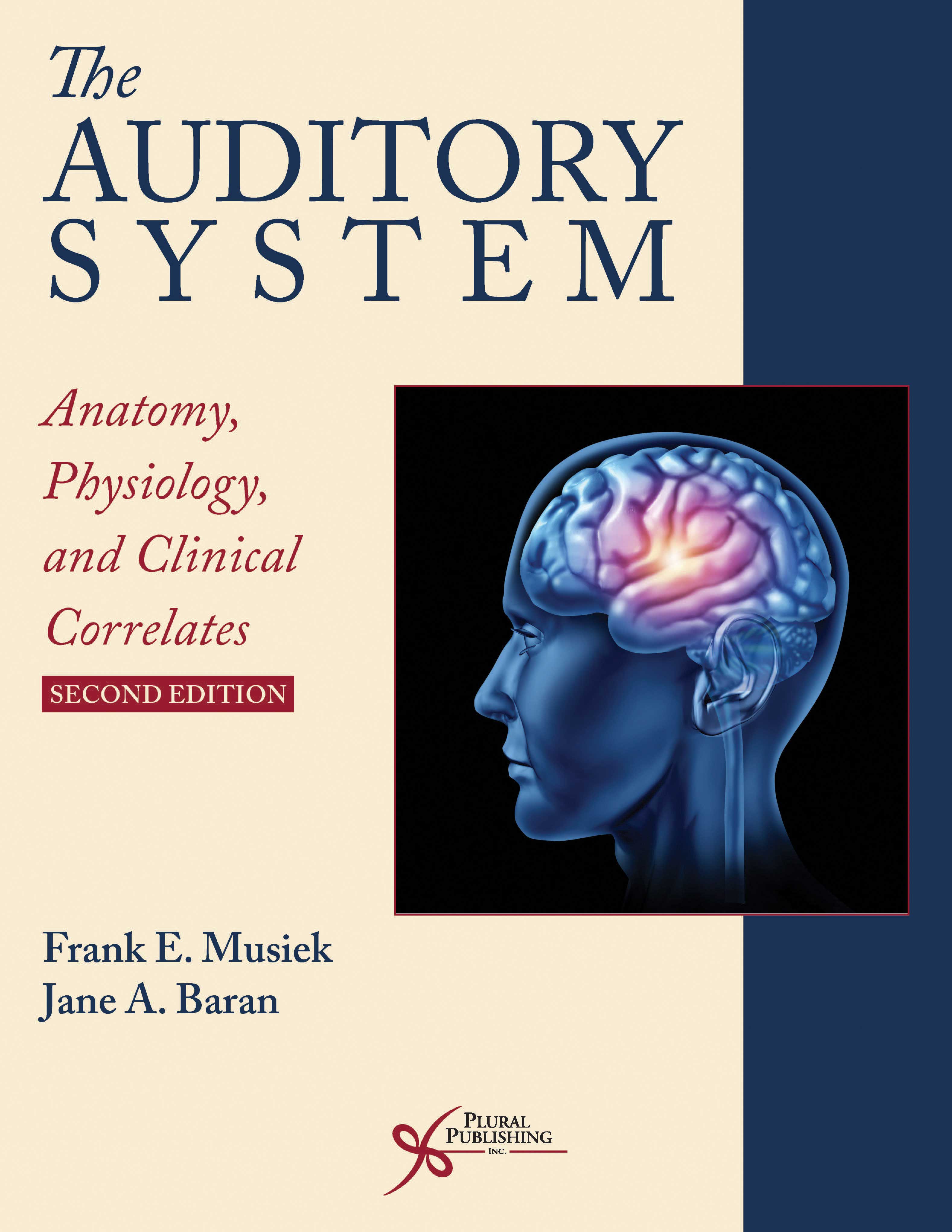
The Auditory System: Anatomy, Physiology, and Clinical Correlates
Second Edition
Frank E. Musiek, Jane A. Baran
Details: 487 pages, Full Color, Hardcover, 8.5" x 11"
ISBN13: 978-1-94488-300-3
© 2020 | Available
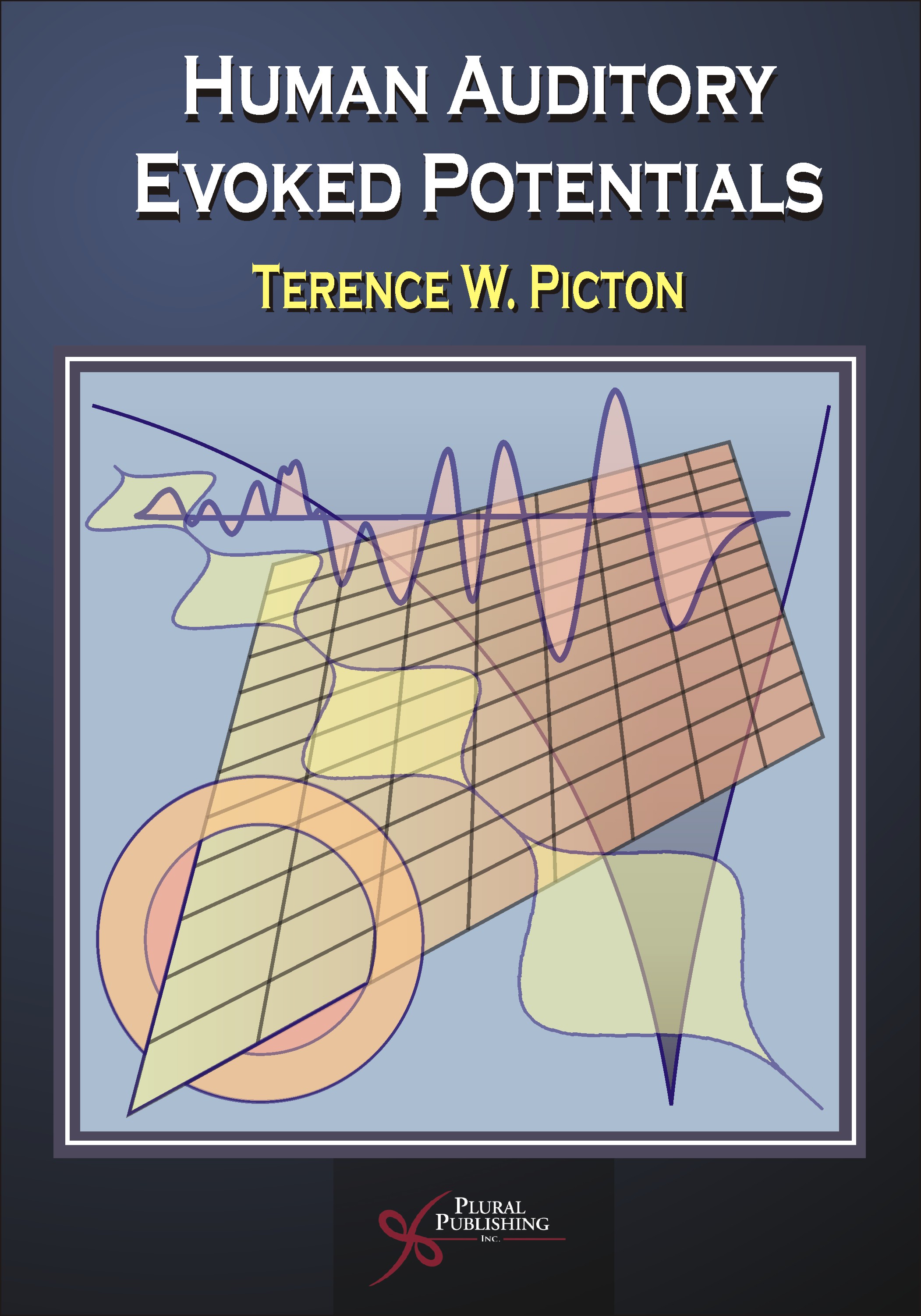
Human Auditory Evoked Potentials
First Edition
Terry Picton
Details: 648 pages, B&W, Hardcover, 7" x 10"
ISBN13: 978-1-59756-362-8
© 2011 | Available
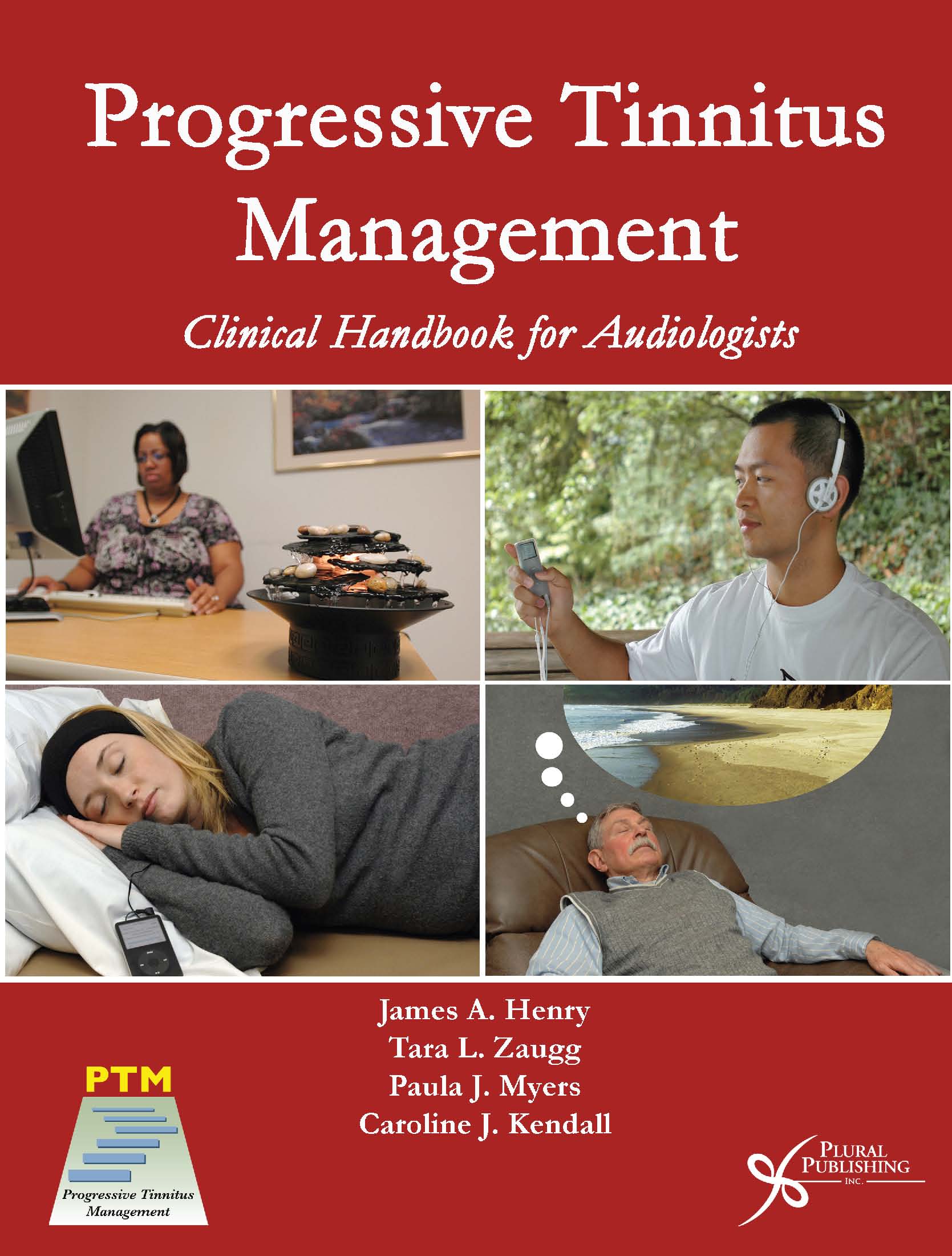
Progressive Tinnitus Management: Clinical Handbook for Audiologists
First Edition
James A. Henry, Tara Zaugg, Paula Myers, Caroline J. Kendall
Details: 170 pages, B&W, Softcover + CD and DVD, 8.5" x 11"
ISBN13: 978-1-59756-404-5
© 2010 | Available
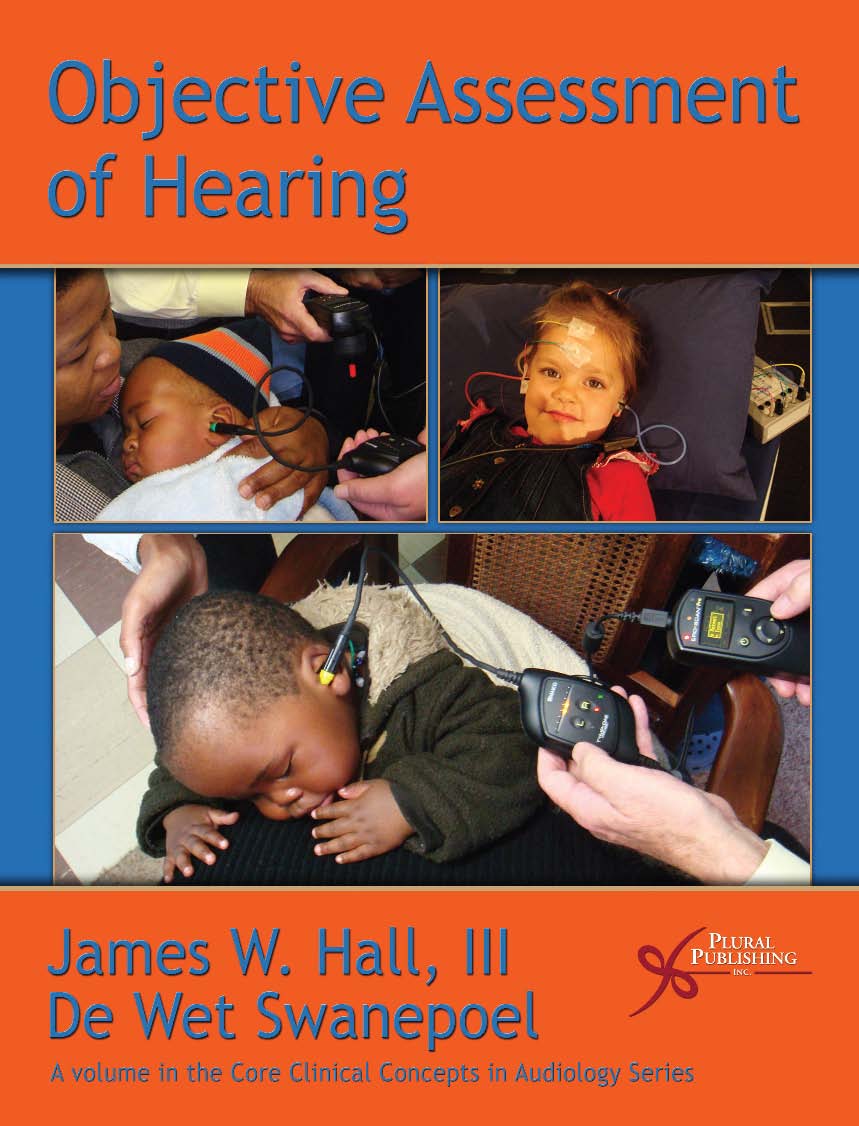
Objective Assessment of Hearing
First Edition
James W. Hall, III, De Wet Swanepoel
Details: 200 pages, 2-Color. Softcover, 7" x 10"
ISBN13: 978-1-59756-353-6
© 2010 | Available
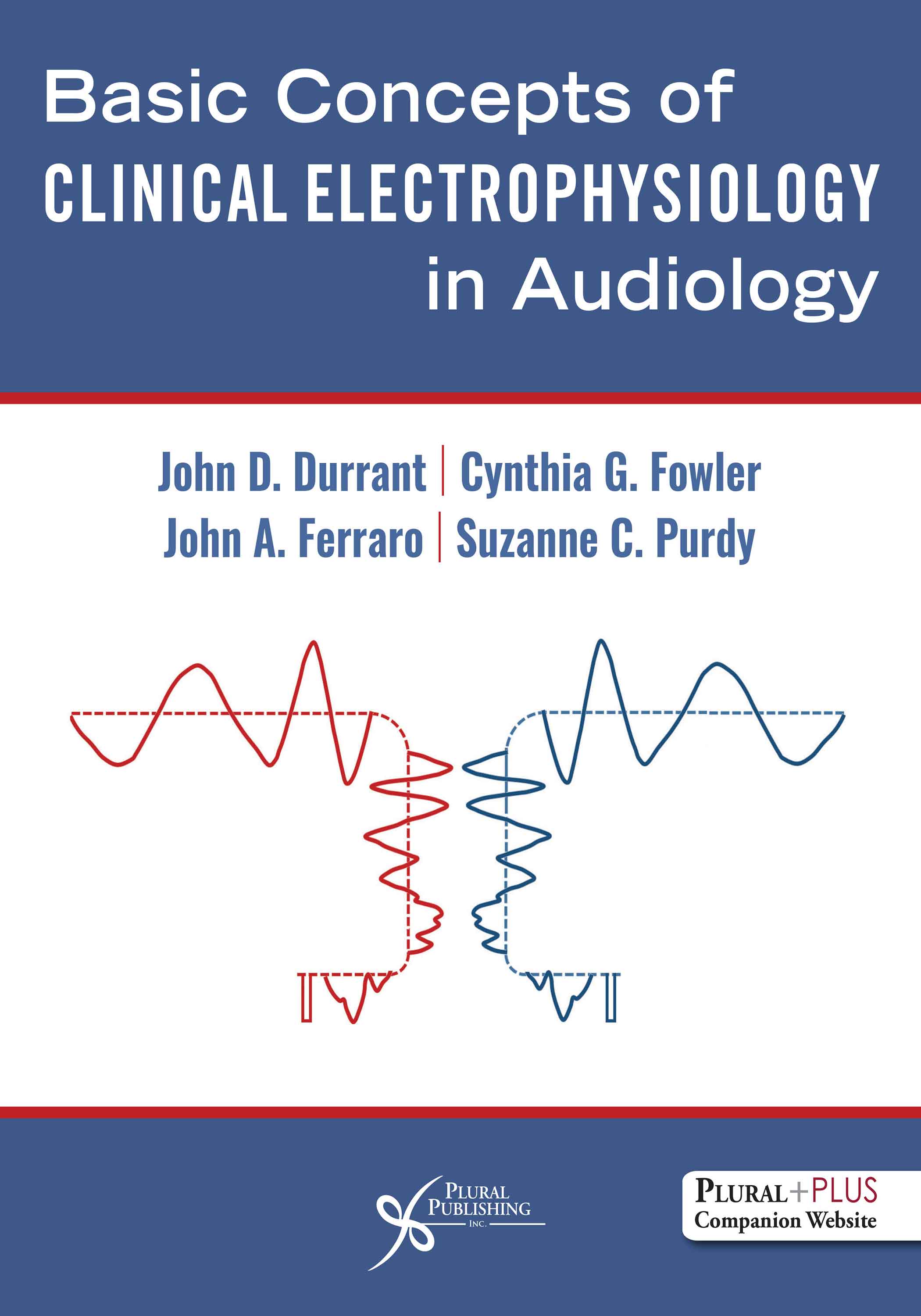
Basic Concepts of Clinical Electrophysiology in Audiology
First Edition
John D. Durrant, Cynthia G. Fowler, John A. Ferraro, Suzanne C. Purdy
Details: 475 pages, B&W, Hardcover, 8.5" x 11"
ISBN13: 978-1-63550-175-9
© 2023 | Available
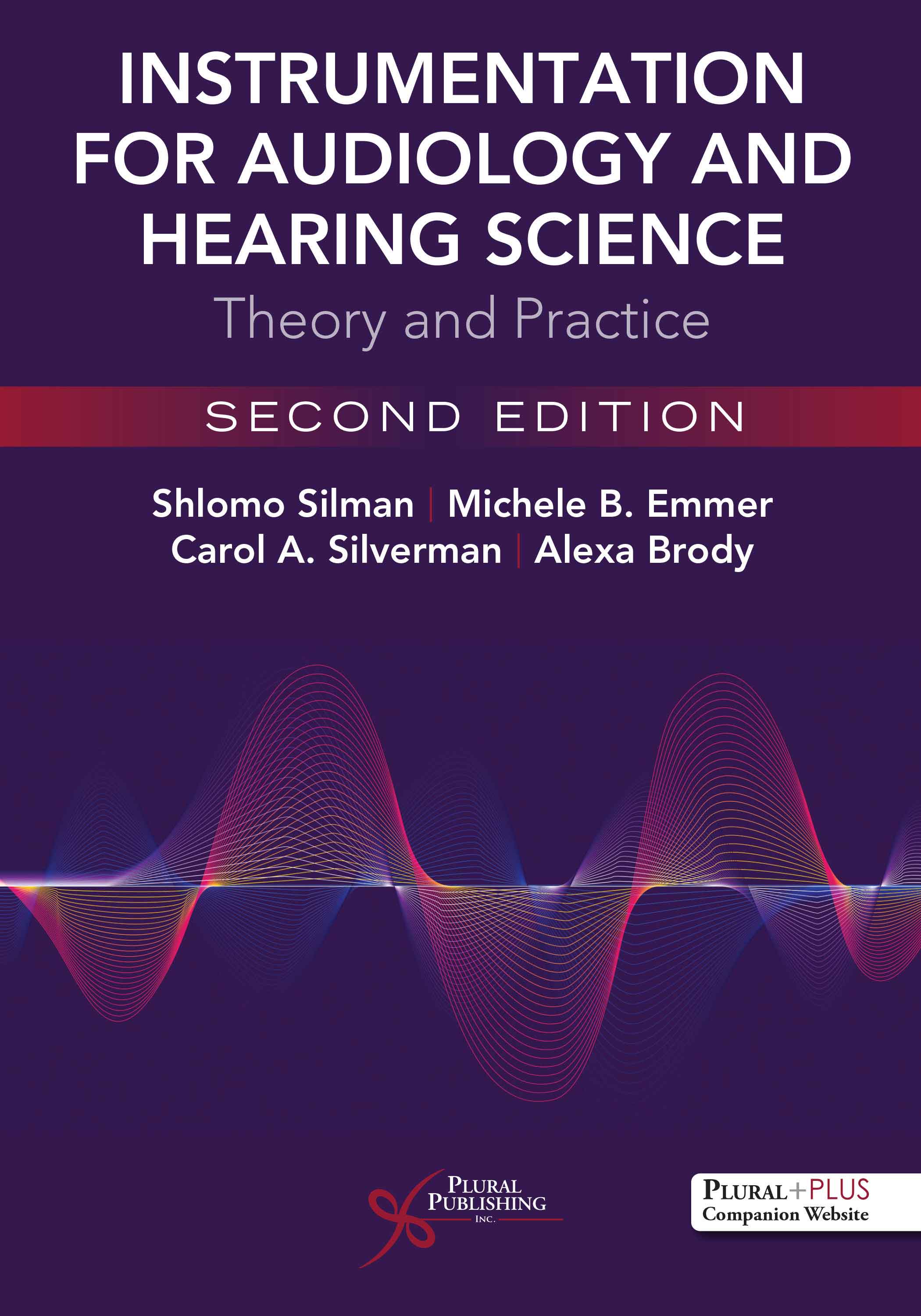
Instrumentation for Audiology and Hearing Science: Theory and Practice
Second Edition
Shlomo Silman, Michele B. Emmer, Carol A. Silverman, Alexa Brody
Details: 338 pages, B&W, Softcover, 7" x 10"
ISBN13: 978-1-63550-226-8
© 2023 | Available

